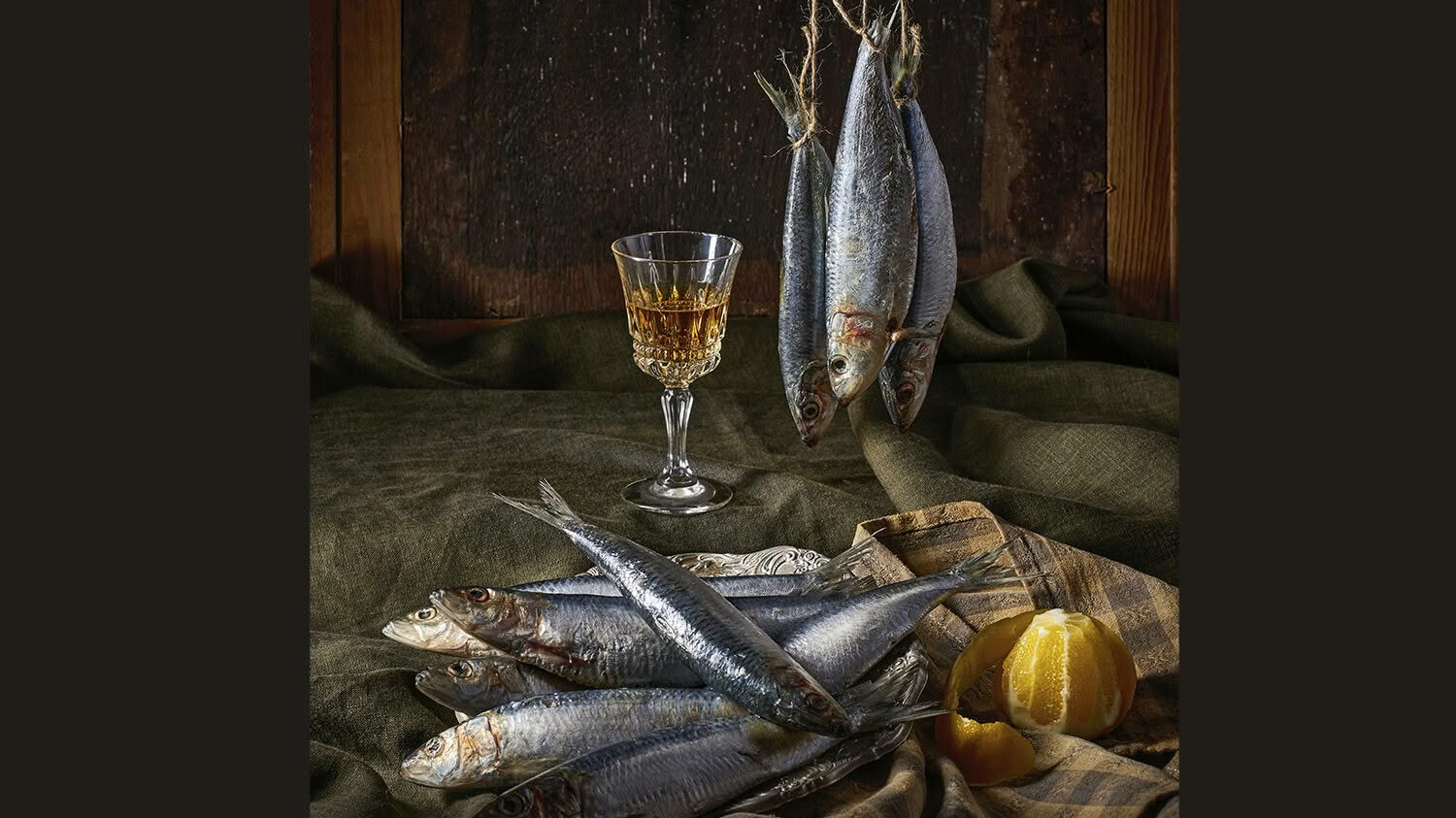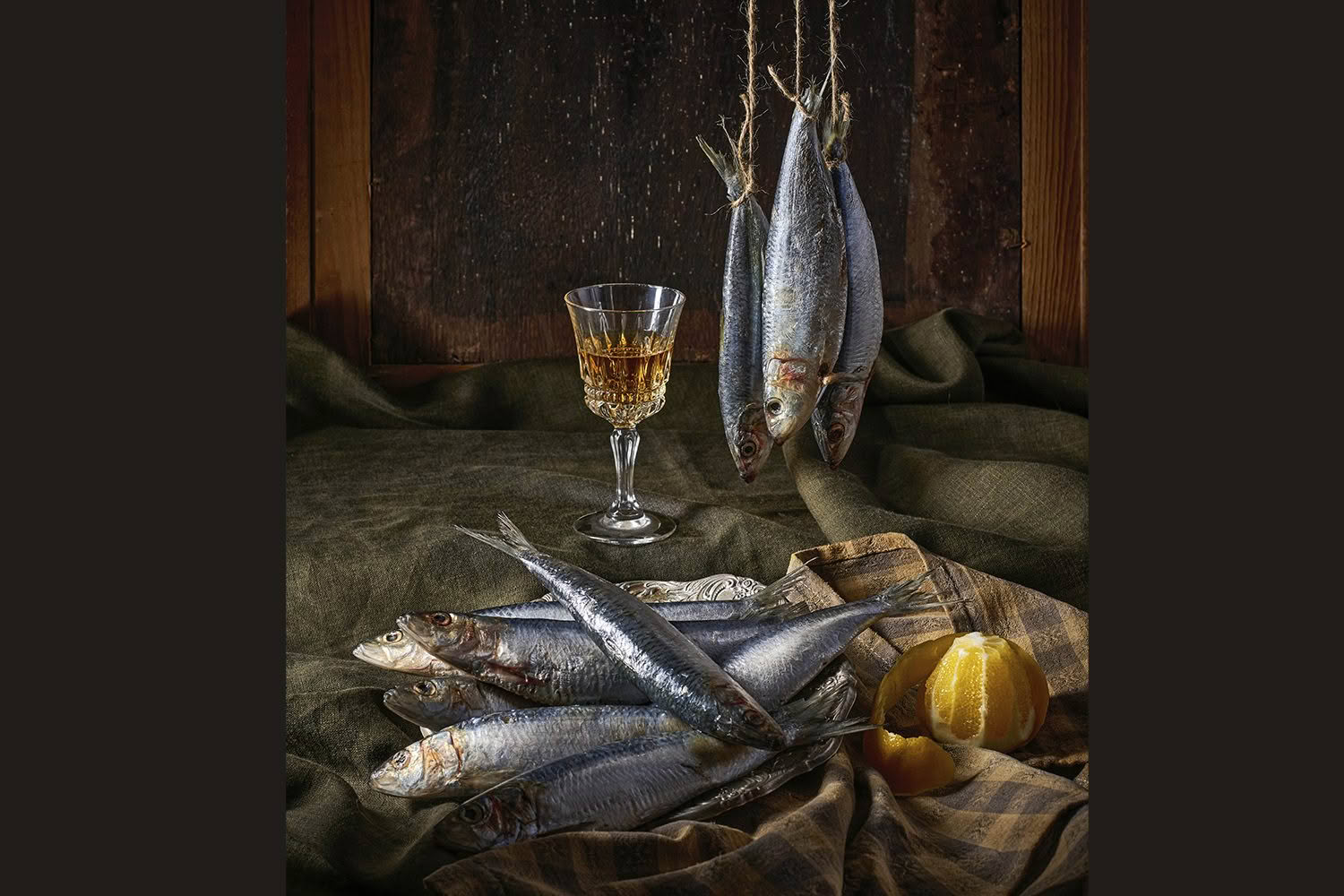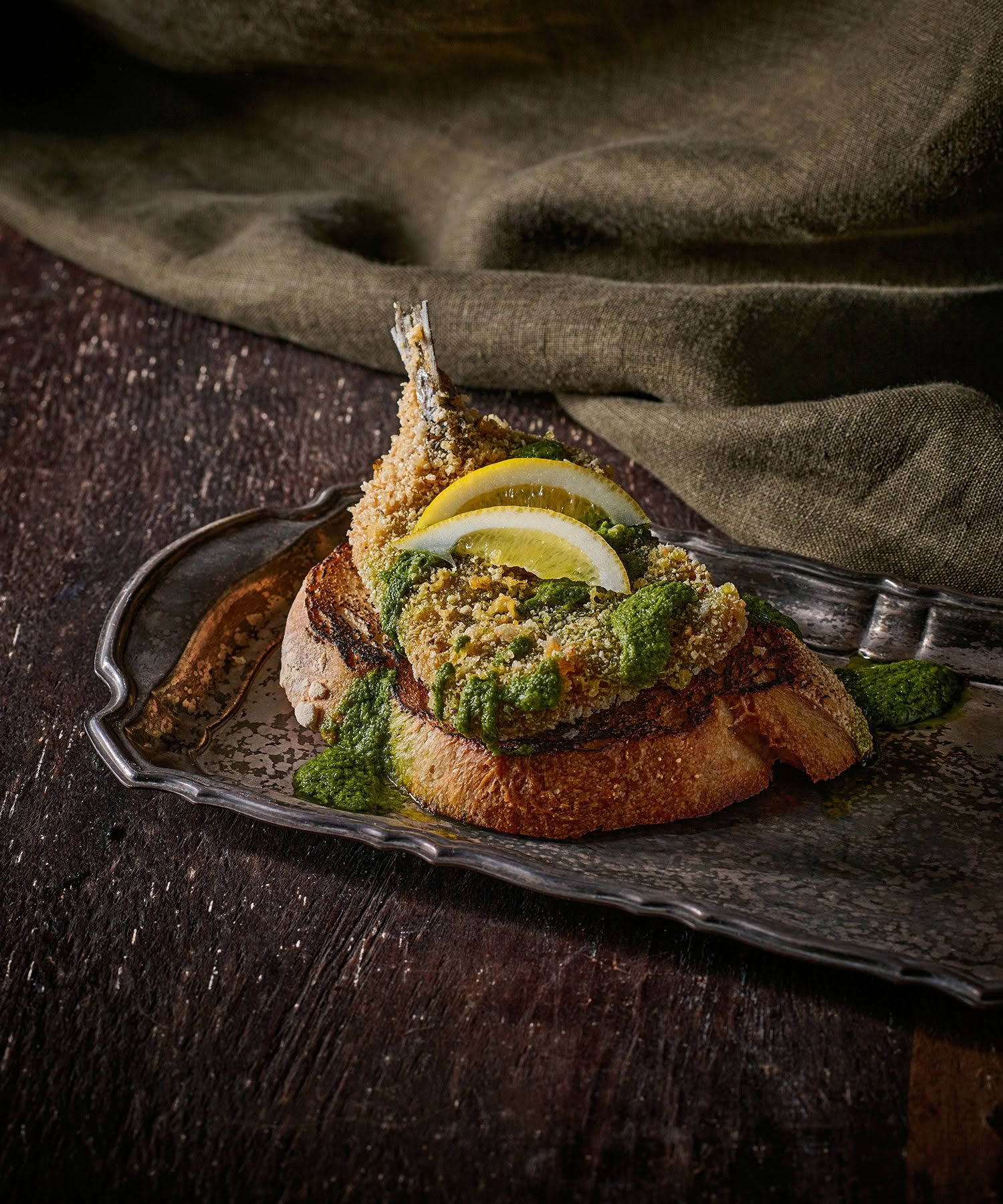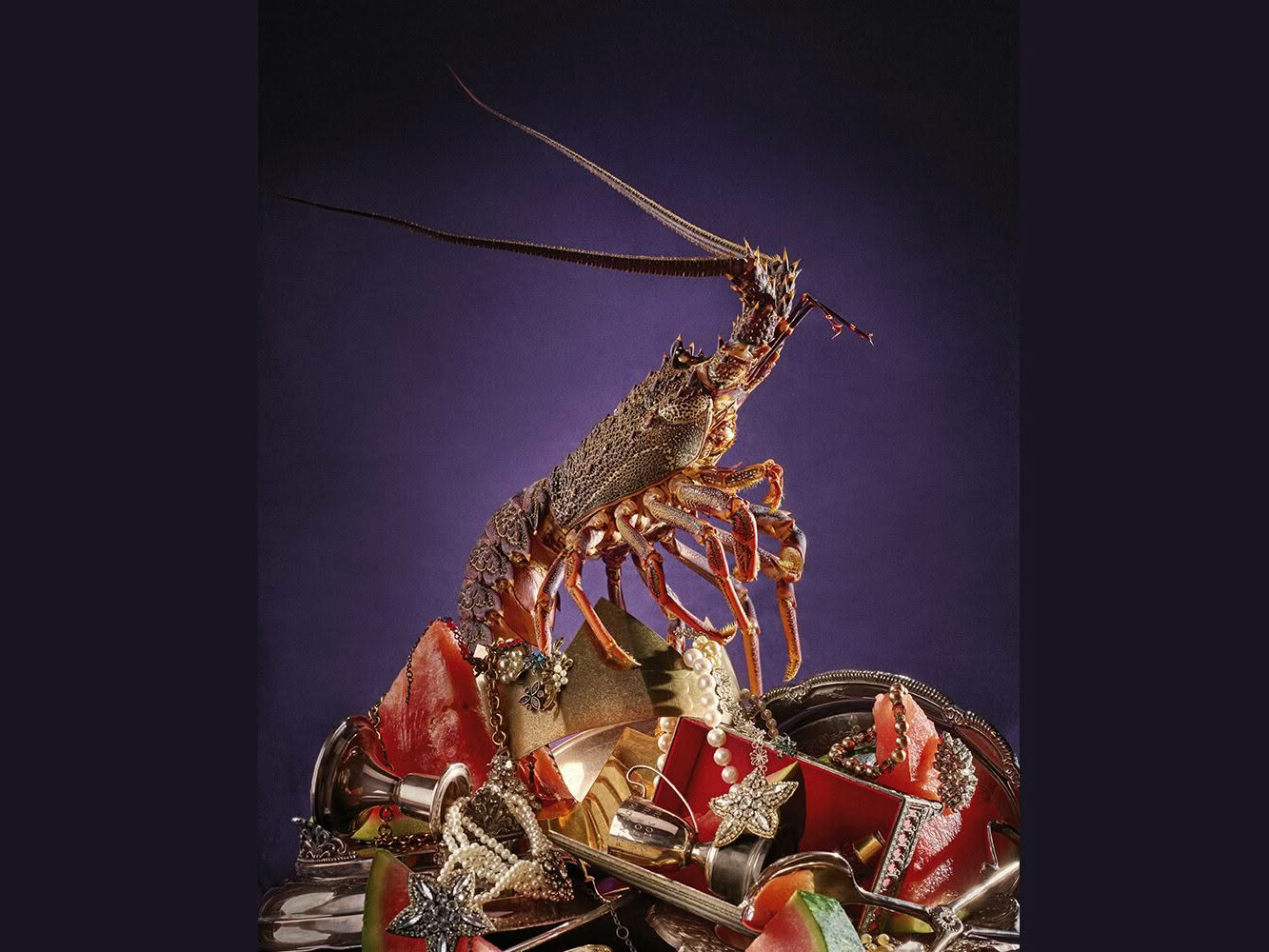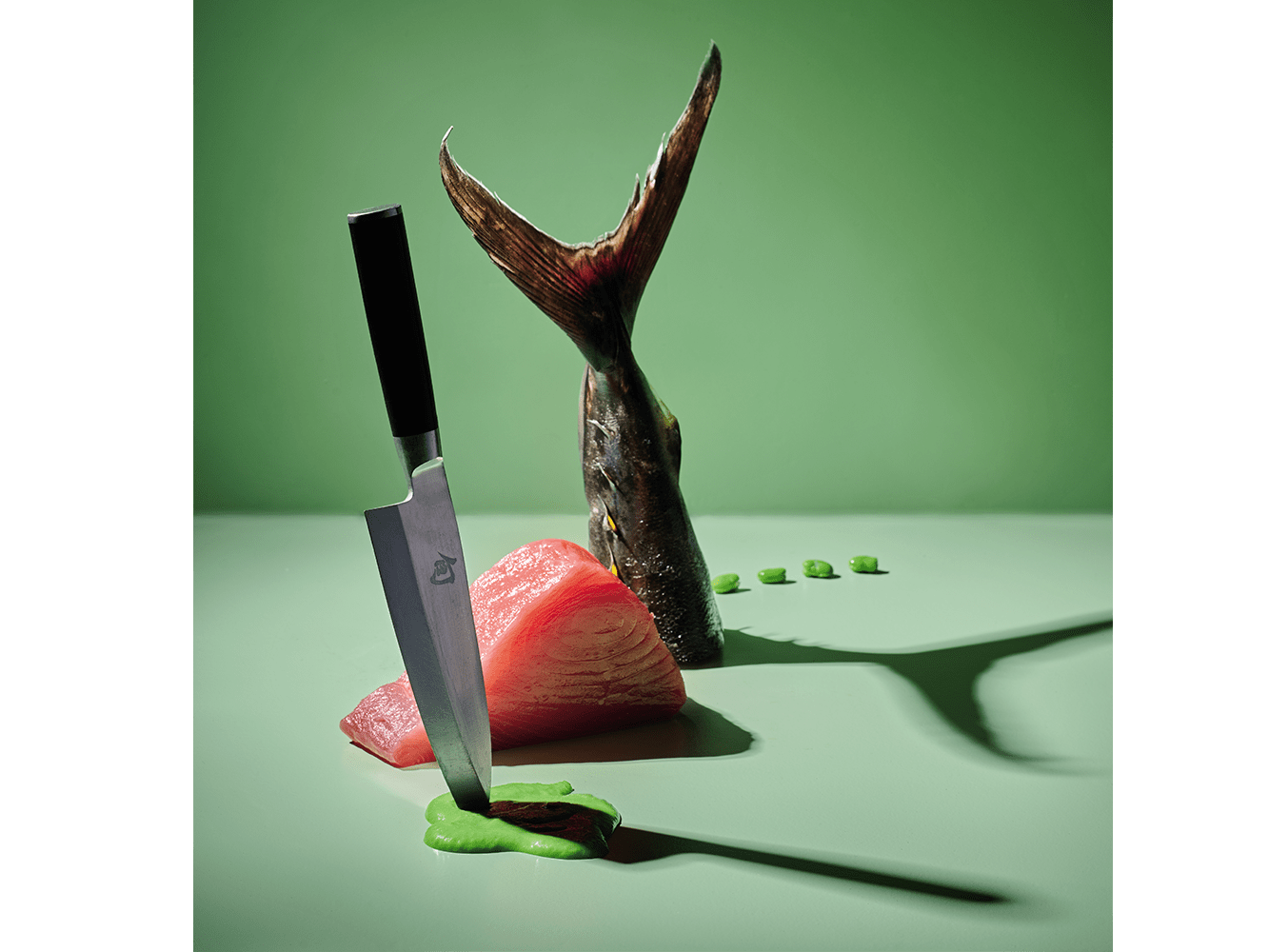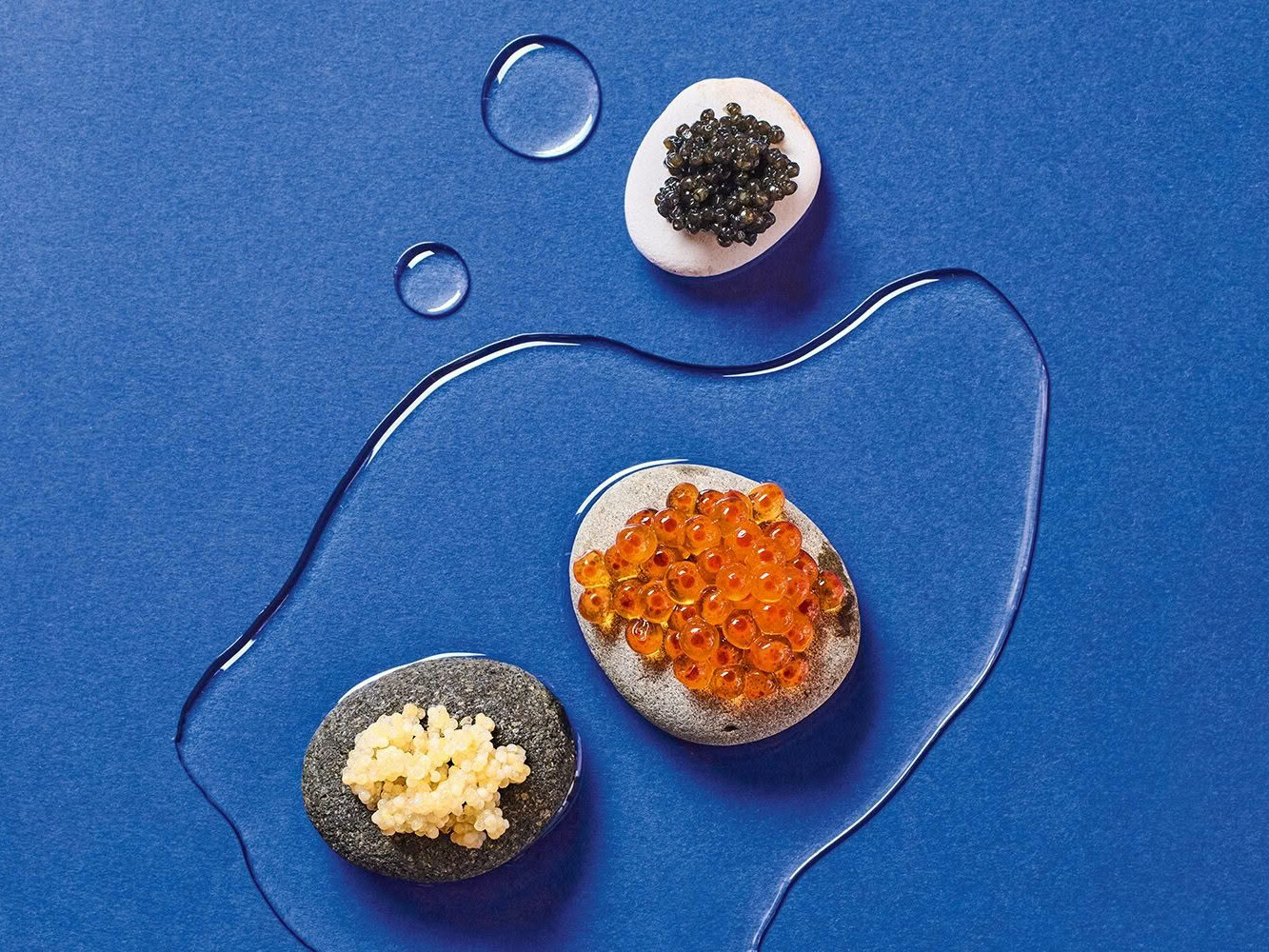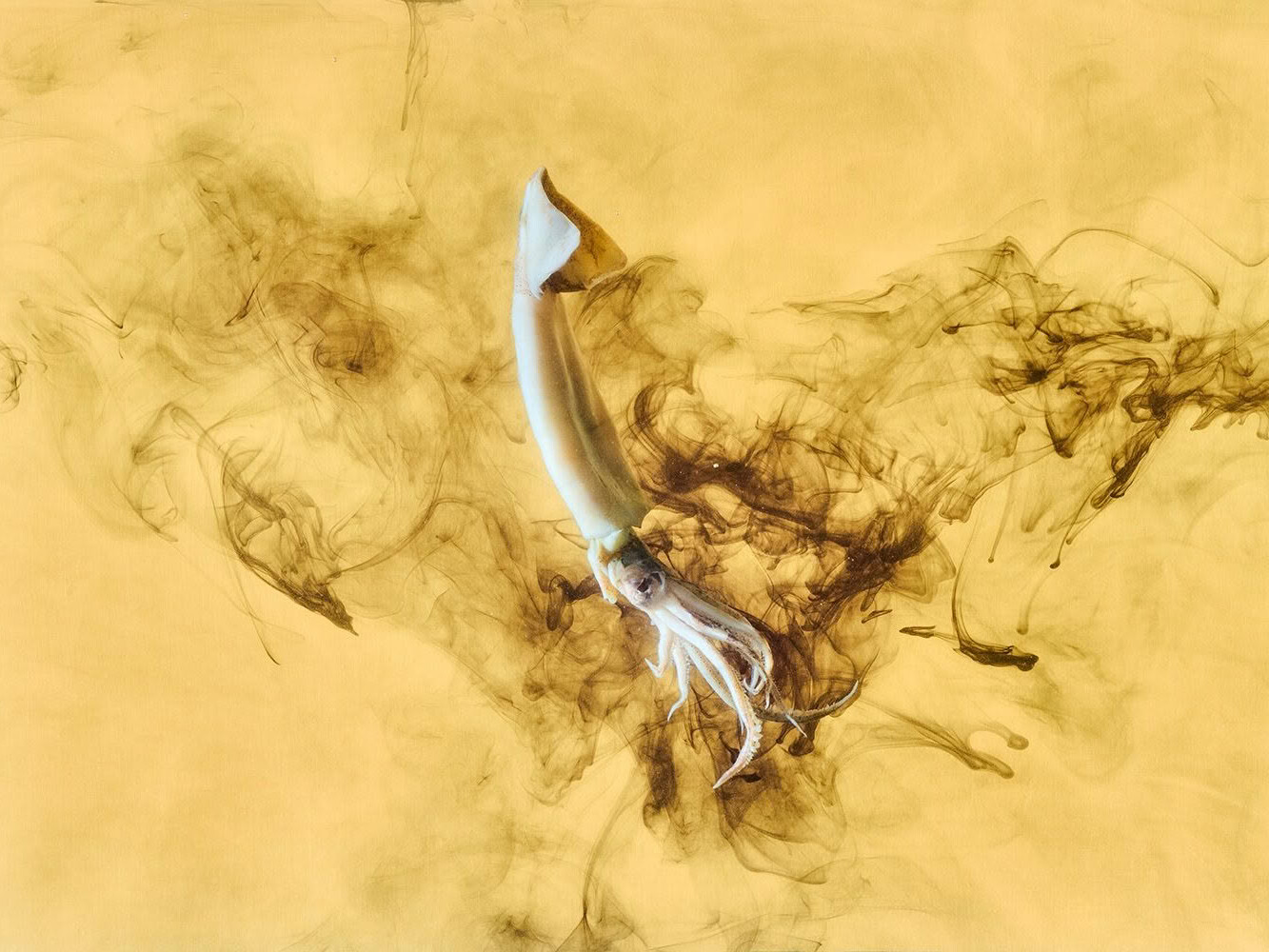IN THE STYLE OF… Caravaggio. His signature painting technique, chiaroscuro, involved creating a sense of volume and depth that brought his subjects to life with an adept use of shadows counterbalanced by striking highlights dramatically illuminating a scene.
Let’s be honest, sardines don’t get the credit they deserve. They’re the culinary equivalent of a B-side track: overlooked and misunderstood but when played right, absolutely banging. They are fish of modest size and exceptional character, known for their glinting, silvery skin and rich, savoury flesh. A staple across the Mediterranean and beyond, they’re a democratic fish, nourishing everyone from farmers to royalty. Historically, they have fed nations, fuelled revolutions and filled lunch boxes.
In Aotearoa New Zealand, the story is still being written. They are abundant in our waters, especially around the North Island and upper South Island. Mostly caught as part of the pilchard fishery (technically part of the sardine family), the fresh ones are about as rare as a courteous Auckland driver. If you get your hands on some, feel lucky. Actually, feel smug. Because what you are holding is one of the great joys of eating.
Most of the catch is exported or used as bait and feed, which frankly is a tragedy. Because when treated with respect, sardines are one of the most sustainable, nutritious and delicious seafoods available. They are high in Omega 3s, rich in calcium and contain more flavour than fish twice their size.
They don’t travel well, these fish, so they are usually frozen at sea. Still, if you do find them fresh (usually in late summer and autumn), look for bright eyes, shiny skins and a smell that whispers of the sea, not shouts of fish. They bruise and sulk if man-handled, so keep them cold, dry and gently tucked in the fridge over a bowl of ice. Eat them quickly: life is short and so is a sardine’s shelf-life, so only buy what you’ll use and cook them the same day if you can.
Pacific-caught sardines that are frozen at sea are readily available and should be defrosted in the fridge overnight.
Tinned? God, yes! They mostly sit in the dark recesses of your pantry, bought several years ago in case of an emergency, or found in the sad aisle of the supermarket, overlooked by people who don’t realise that power often comes in small, silvery packages. The tins are not an apology, they’re an art form. France, Portugal and Spain have each turned sardine preservation into high camp and high culture. Local options are fewer, but a good tin of sardines is still one of the most flavourful things you can slap on a piece of toast. But for the love of Tangaroa, don’t stop there. Lay them on a pizza, toss them through spaghetti with toasted breadcrumbs, lemon zest and chilli, or ramp up that toast by serving them with butter and pickled onions for something deeply satisfying.
When fresh, whole or filleted, they love a hot grill, a squeeze of lemon, a sprinkle of salt, some attitude and a handful of parsley. Butterflied fresh sardines crumbed in parmesan and fried like you mean it, crisp on the outside, melting within? Well, now we are talking. Hit them with a spoonful of salmoriglio, a Sicilian sauce made of lemon, garlic, oregano and olive oil – it’s sharp, herbal and utterly perfect with oily fish – and you have basically turned this humble fish into something Fellini would have dreamt about over lunch.
Buy the good ones. Treat them well. You could ask your fishmonger to clean and prepare them, but really you are better off doing it yourself. There are several ways to fillet a sardine, some of which require the knife skills of a sushi chef and a sharp blade – good luck filleting a sardine with anything less than a scalpel. Fortunately, there’s a way that just requires your hands and a pair of kitchen scissors.
First, rinse the sardines under gently running cold water, then use the cutting edge of an open pair of scissors to carefully clean away the scales, scraping from the tail up towards the head, taking care not to tear the skin. Using the scissors, cut off the head just behind the gills, cutting at a slight angle so that you remove the small pectoral fins on each side. Now take the scissors and cut the belly open, starting at the opening where the head used to be, cutting right down to the tail. Using your fingers, pinch the dorsal fin and pull it free from the fish, then scrape out the contents of the belly and rinse the cleaned cavity under cold running water, scraping out any blood or viscera that is still attached.
Spread the belly cavity open and, using your fingers, carefully pinch the spine, pulling it free of the flesh – it should pull easily – all the way down to the tail, then cut it free. You now have a butterflied sardine, ready to use. Divide the fillets individually if you want. Most large bones will have been removed, and any small bones are too small to matter, so don’t panic about them.
Eating sardines is a quiet act of good taste and maybe, just maybe, we will start calling these little fish what they are – one of the best damned things from the ocean.

